May Flowers 2015
05/01/15
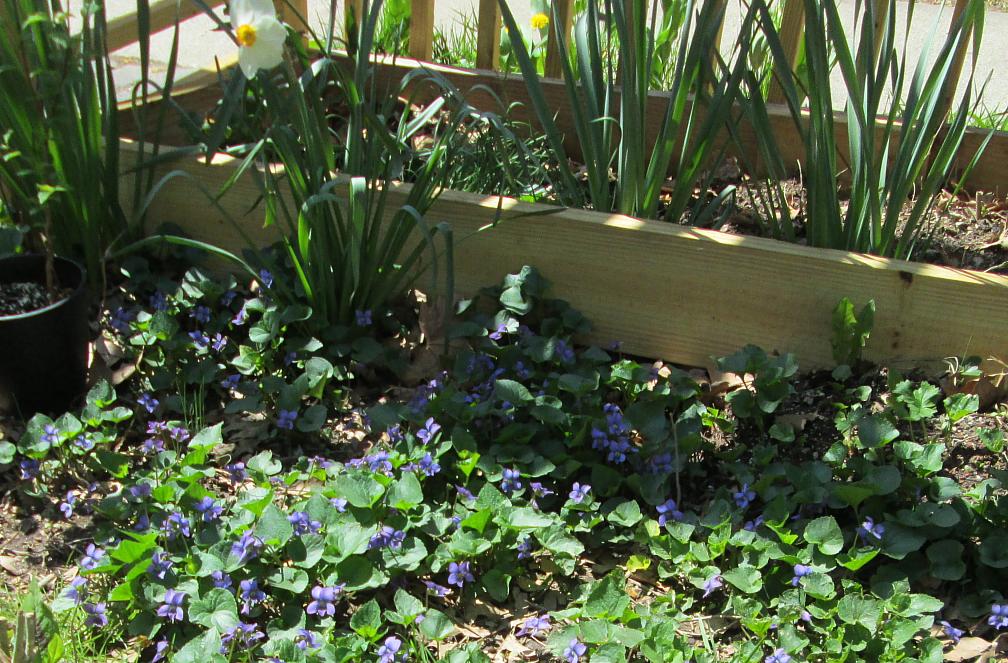
We started with the Crocus, then the Daffodil, followed by the Tulip. After that, it is usually May. The ground has warmed
up and life is wiggling and crawling and flying in the sunshine.
The next natural flowers are small and less showy than the April
bloomers. In the photo, you still see a lone daffodil that, like
me, was a late bloomer and is still around after most of the
others have died off, leaving only their leaves to feed the bulb
for growth next year. But all around it are the purple violets
that will cover the ground for most of the month of May before
they, too, die off and leave only their leafy greens behind. In
the background, you see a yellow Dandelion, that should also be
everywhere in East Orange, whether it is wanted or not. Collect
the yellow blossoms and get ready to make Dandelion wine!
Separate the yellow flowers from all the green parts underneath
that taste bitter! You'll need to fill a large pot full of the
yellow dandelion flowers to make a gallon of wine.
Some recipes: http://www.twineagles.org/dandelion-wine-recipe.html
Dandelion wine and Dandelion
cookies! http://commonsensehome.com/fields-of-gold-its-dandelion-time/
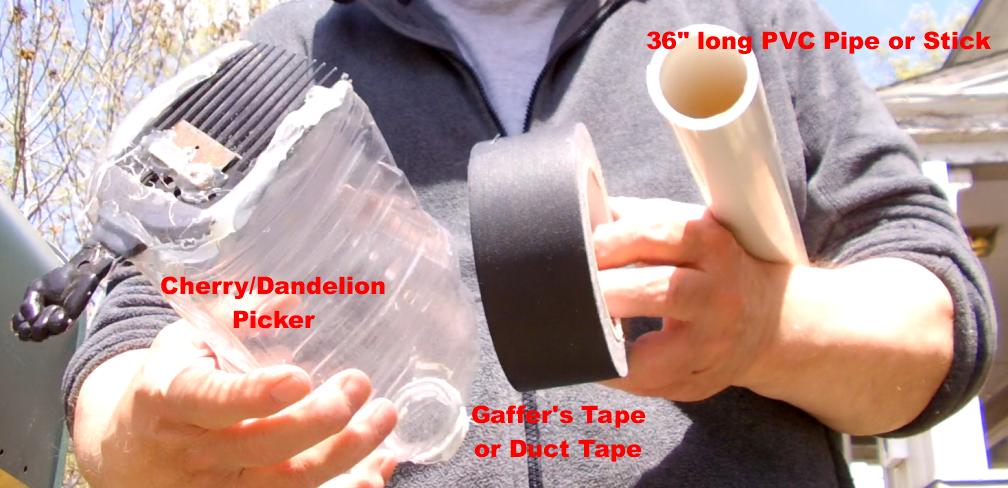
I started my Dandelion Hunt by
making an adjustment to my 2013
Cherry Picker, which I won't need for a
few more weeks yet.
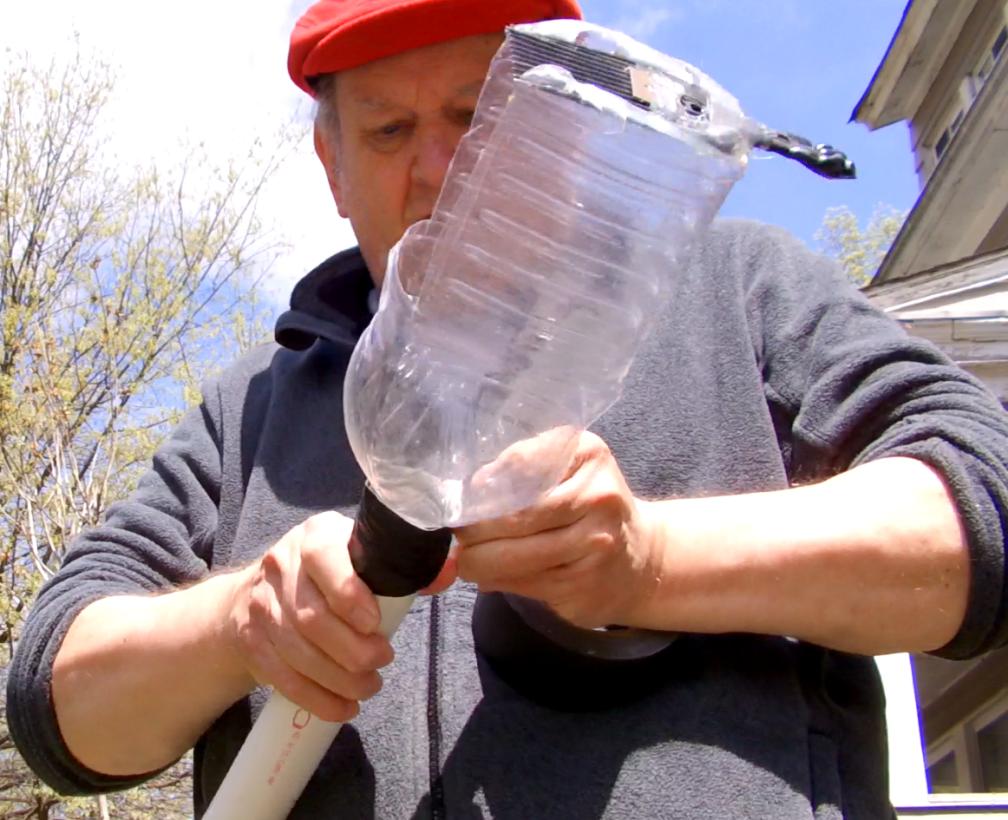
The newly renamed Dandelion
Picker is attached to a much shorter pole, 36 inches long, using
gaffer's tape or duct tape. Presto, it's ready!
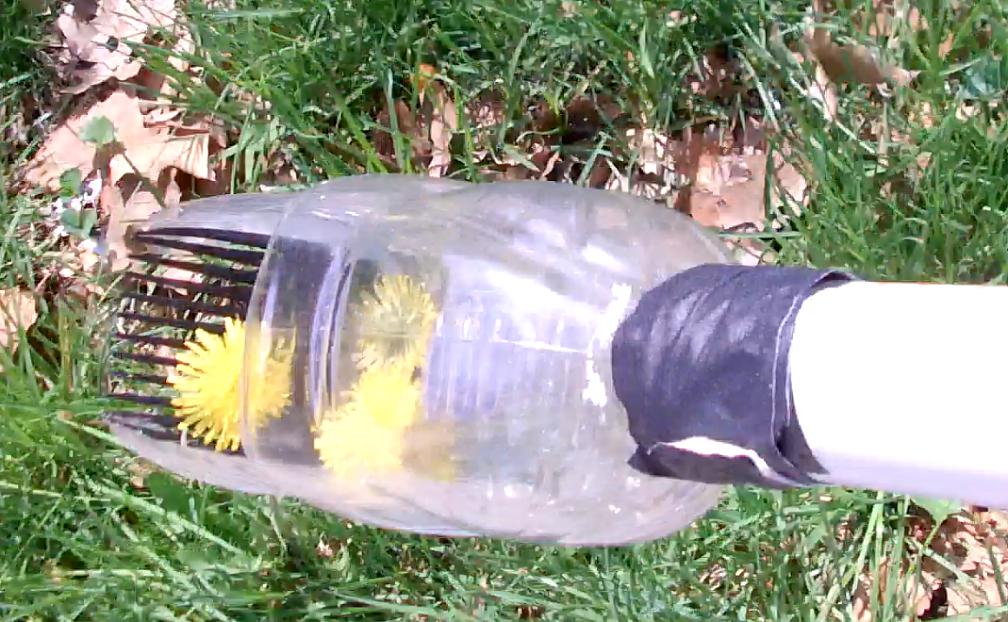
It's the same as picking
cherries, except dandelions grow much closer to the ground and
there is no need for them to travel through the PVC pipe to a bag
(although you could do it that way if you wished!).
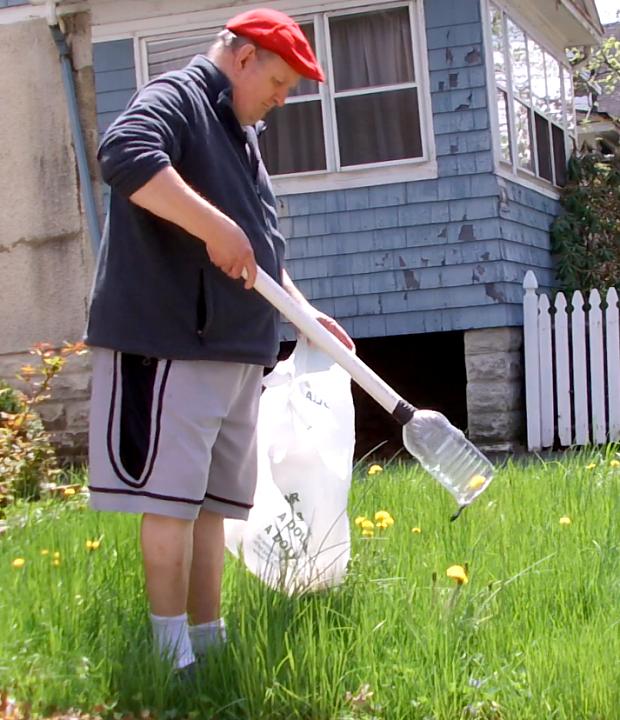
Just walk along and scoop up the
dandelion heads. The stems aren't needed, just the yellow
flowers. You can put them in a shopping bag or a plastic
collection pot. Best time is early morning, and keep the
dandelion flowers cool until you are ready to pluck them.
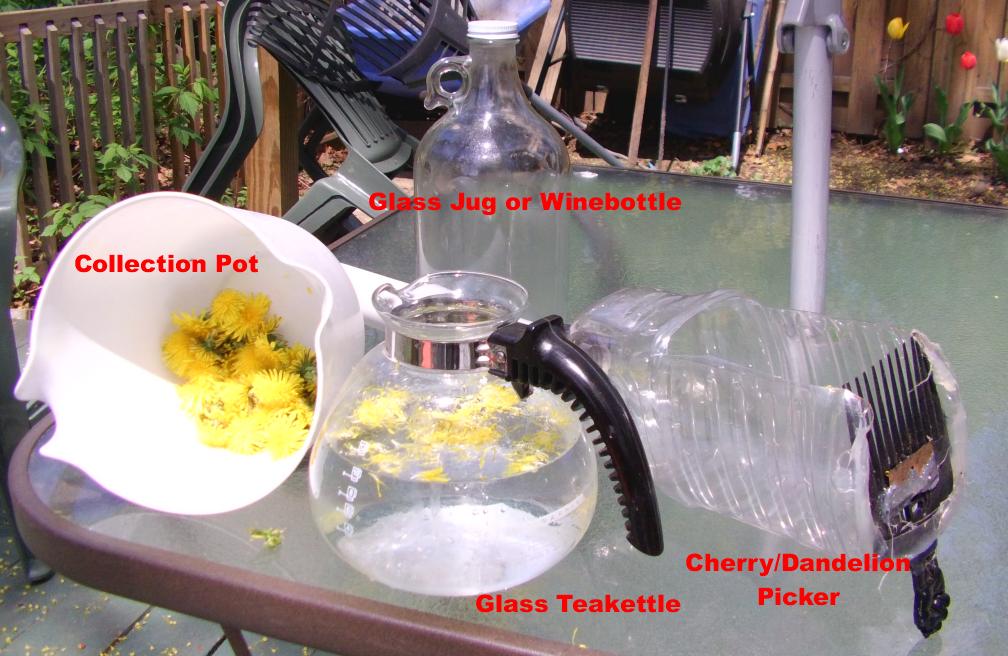
My basic equipment is shown
above. A collection pot - Dollar Store; a glass teakettle for
boiling water and making a "tea" from the flowers, the
picker so you don't have to bend over to collect the flowers, and
a glass jug or wine bottle for measuring the water and collecting
the wine.
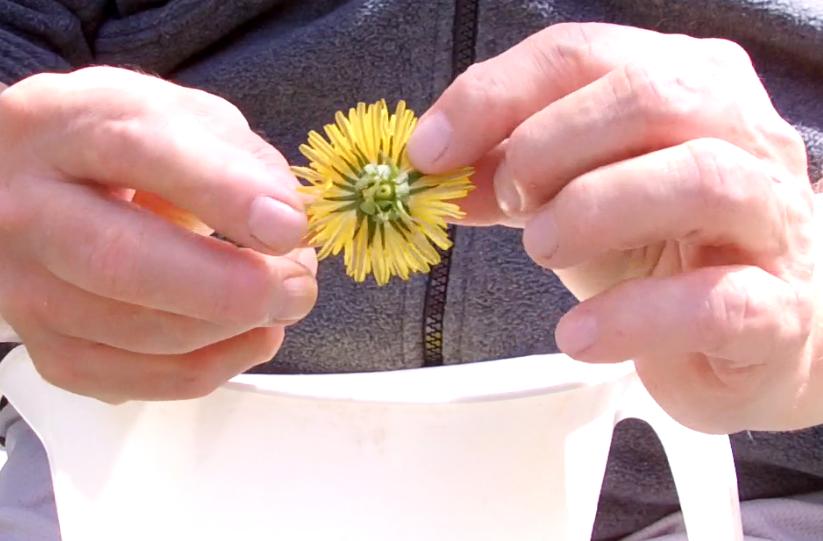
Your basic dandelion flower has
two parts - the yellow petals and the green sepals that hold the
petals together. Your job now is to separate the two. The green
leaves are bitter and you don't want them in your wine.
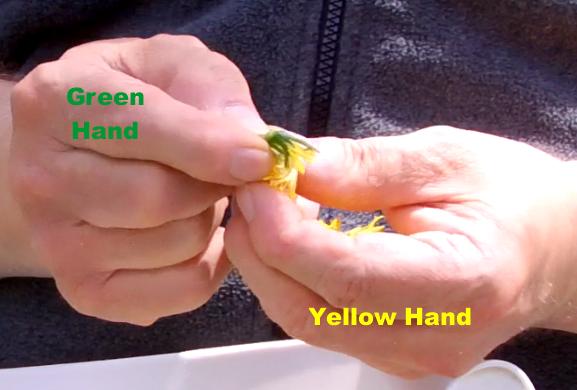
Decide which will be your green
hand and which will be your yellow hand. They will actually turn
those colors by the time you finish! With the green hand, pinch
the center of the sepal, breaking it open and spread it apart
with your thumb. With your yellow hand, gently pull the petals
into your palm, sort of like plucking a chicken but without the
squawking. Just fluff them out and drop into a collector bowl.
Make sure you don't mix in any green parts, and watch out for
ants which love to travel in the dandelion heads. Collect the
green parts separately and dump them into your compost along with
any ants still foolish enough to be hanging around.
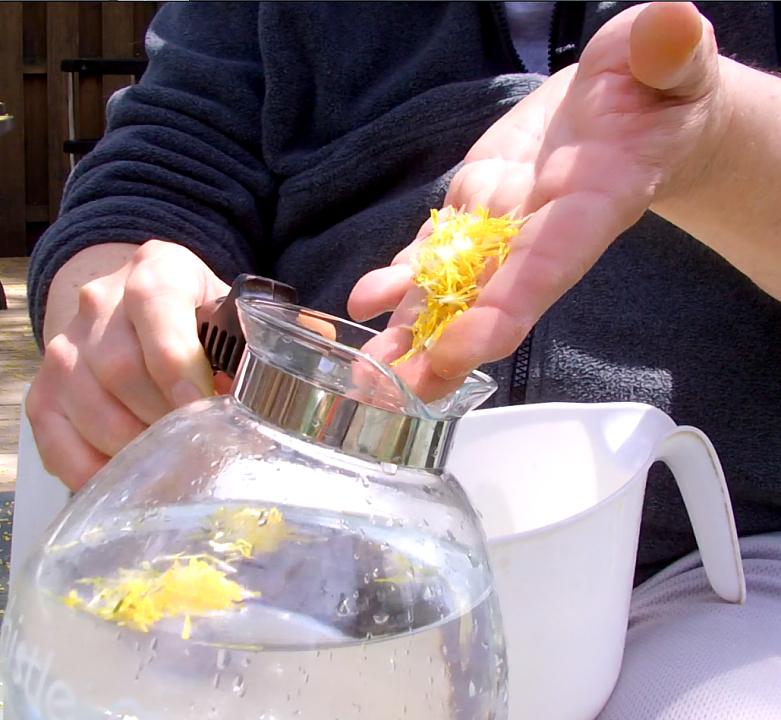
The yellow petals can be dropped
into the glass teakettle (which can have some cold water in it).
When the teakettle is filled with as many petals as you can stuff
inside, pour boiling water in on top of the petals to make your
dandelion "tea." I like to simmer the mixture, but be
careful it doesn't start boiling up and out of the kettle! When
it's cool to the touch, cover the kettle with the little plastic
top, or put a clean sock, paper coffee filter or cloth over the
top and fasten it with a rubber band. It will steep for three
days.
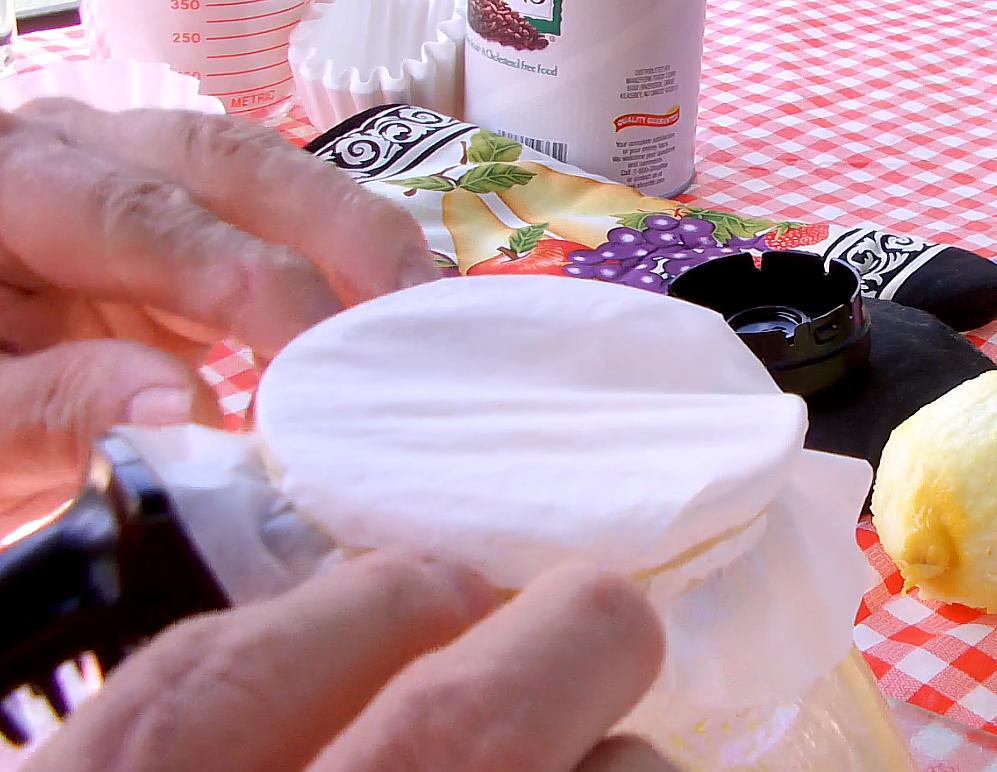
My teakettle top is covered
with a paper coffee filter, held in place with a rubber band.
Time to go shopping for two
oranges, one lemon, a box of raisins, and at least two pounds of
sugar. There's no rush. The tea steeps for three days and the
wine won't be ready until around Thanksgiving or Christmas.
You'll also need some wine yeast
(not the same as bread yeast!).
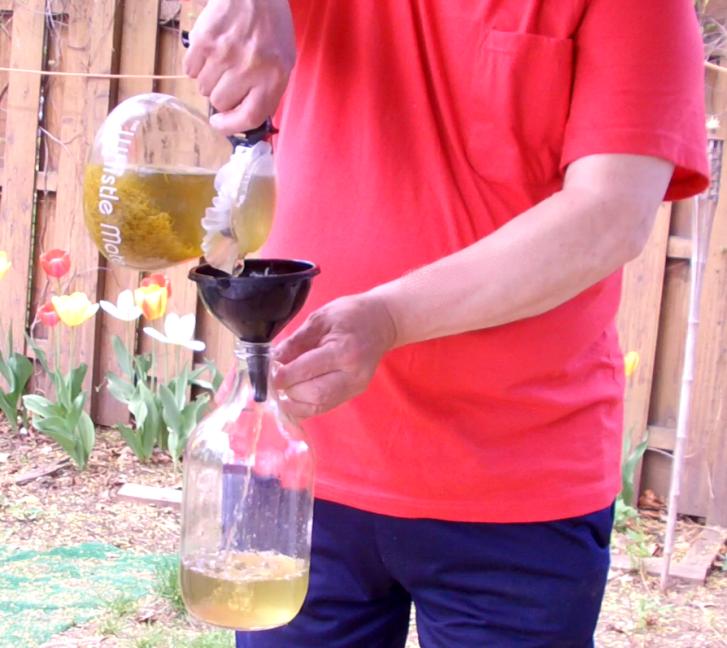
Three days later, the Dandelion
"tea" is poured right through the coffee filter and
into the clean and sterile bottle that will be its permanent "home." You may have to punch a tiny hole in the paper filter
towards the handle side, so that air can get in to push out all
the fluid.
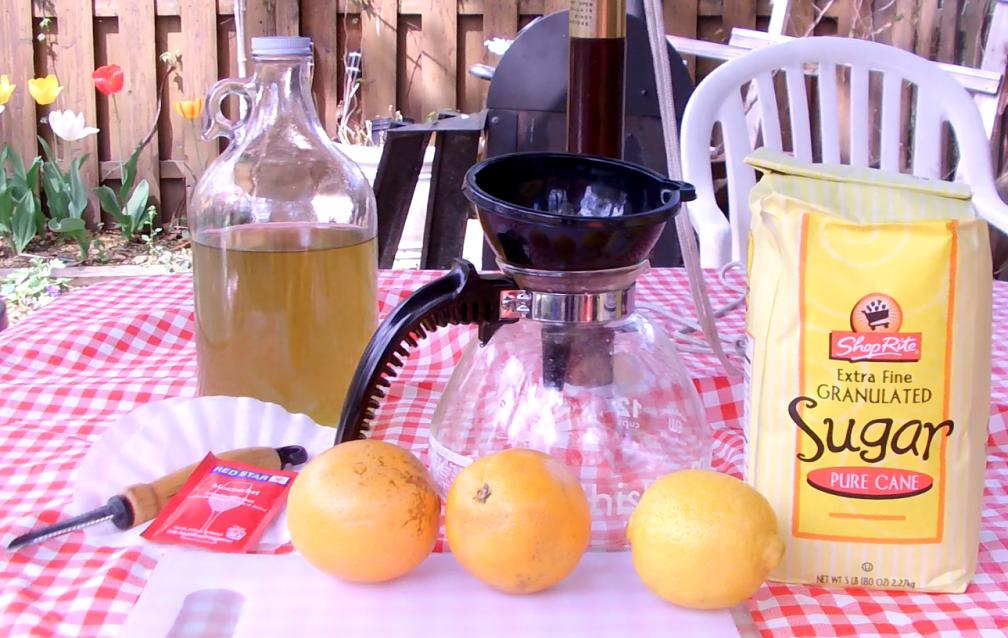
I've been shopping and have all
the ingredients needed to finish brewing the Dandelion Wine. Note
that the bottle is not as full as when I started, but I can
always add a bottle of spring water to fill it up at the end.
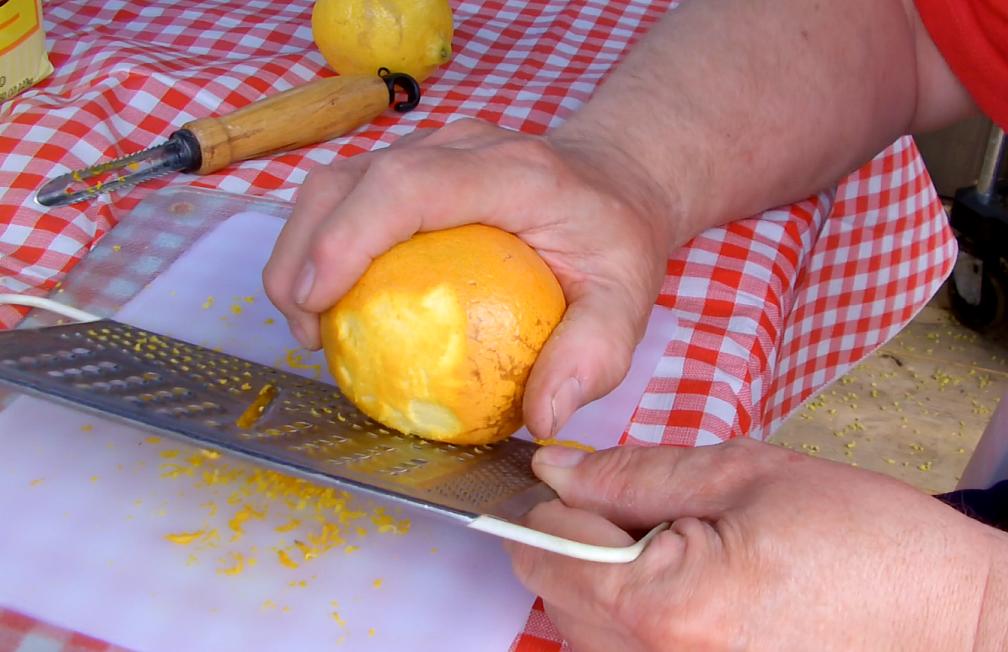
I tried a couple of tools for
grating the "zest" or flavorful skin from the oranges
and lemon. A regular paring knife can be used, but you get large
chunks. The best tool turned out to be my Dollar Store cheese
grater, and I got to use the tiny holes side which I never use
for grating cheese. For fast work, however, use the same large
holes that you use for grating cheese and you'll be done a lot
sooner.
The "zest" gratings go
right into the tea kettle with about a cup or two of the
Dandelion "tea". Let that come to a boil and simmer for
about ten minutes. Then cool it down, put on a new coffee filter
top and pour the "zest tea" back into the original
bottle.
Pour the latest "tea"
from the bottle back into the glass tea kettle. Add three cups of
sugar (more for sweeter wine, less for a drier wine). Bring the
teakettle to a boil and stir until all the sugar is dissolved
into the tea. When the liquid is clear and there is no sign of
grains of sugar floating about, it's time to add the fruit, which
should be all sliced and ready.
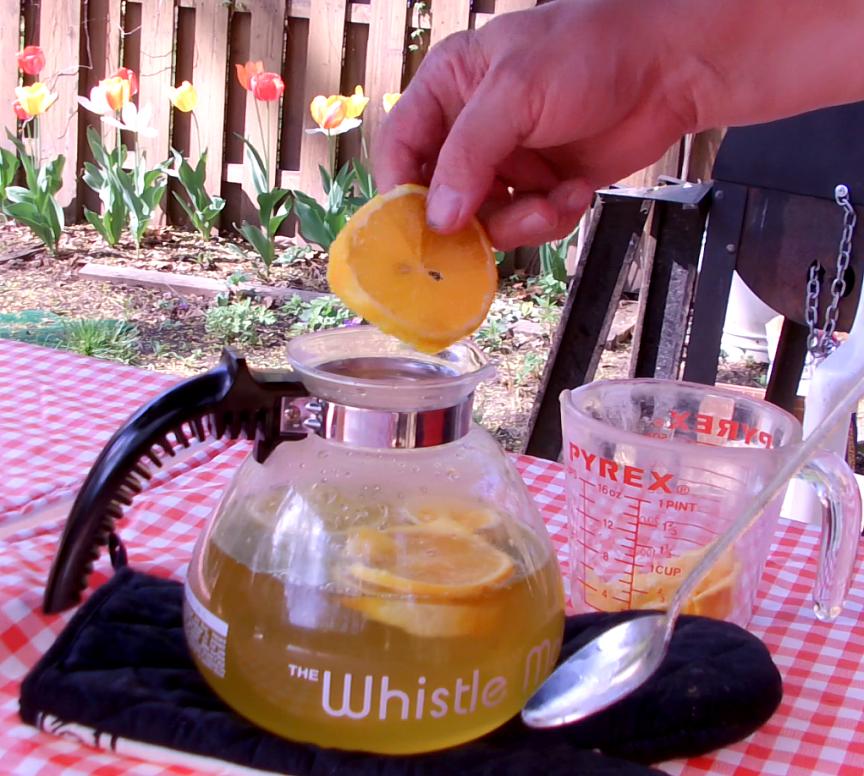
The slices of fruit (oranges and
lemon) get dropped into the teakettle on top of the sweetened
tea. Add the raisins. I used a couple of handfuls. Stir it around
and when the kettle is cool enough to touch, put on a new coffee
filter and rubber band top. Put the top back on the bottle of
leftover dandelion tea mix. This will get added later.
When the teakettle is just
pleasantly warm to the touch (not hot), remove the coffee filter
top and add the packet of yeast. Stir it around and mash the
fruit up a bit (it will be soft by then). Make a new paper coffee
filter top for the tea kettle and this time put it aside for as
long as it takes to ferment (two to six days is usual). If gas
pressure builds up in the teakettle, you can poke a hole in the
filter with a pin to let out the excess gas. Open up the bottle
when you check on the teakettle, just to make sure gas is not
building up inside it.
When you think the fermentation
phase has stopped, remove the coffee filter from the tea kettle
and mash up the fruit some more. Pick out the large pieces of
fruit with a fork, shake off the liquid back into the tea, and
add the pieces to your garden compost. Make a new paper coffee
filter top for the teakettle and pour the remaining liquid
through the filter back into the bottle. It should start to smell
like wine! Don't be concerned if the wine is cloudy at this
stage. It still has to be filtered again. Wash out the tea kettle
and then pour all the cloudy Dandelion wine liquid into the tea
kettle. Put on one last paper coffee filter top. Wash and rinse
the wine bottle. Scald it if it makes you feel better. Then pour
the final Dandelion Wine from the teakettle, through the filter,
and into the wine bottle or jug. Now it should look like orange
juice. Add spring water to bring the level of wine almost to the
top of the bottle.

You can buy a fancy airlock from
a wine-making supply house or Amazon.com, but I enjoy watching my
balloon bottle top inflate. A balloon from the dollar store is
snapped over the top of the bottle and as gas continues to be
produced by the yeast, the balloon will inflate on top of the
bottle. Snap it off and let the gas out every day. Eventually the
balloon will no longer inflate and the bottle is ready to be
corked or sealed and aged. Set a date on your calendar
(Thanksgiving to Christmas is just about right) and put the
bottle away in a cool dark location for aging. Bring some wine to
all the neighbors who contributed dandelions to your wine.
Jim Gerrish
12/24/15 Christmas Dandelion
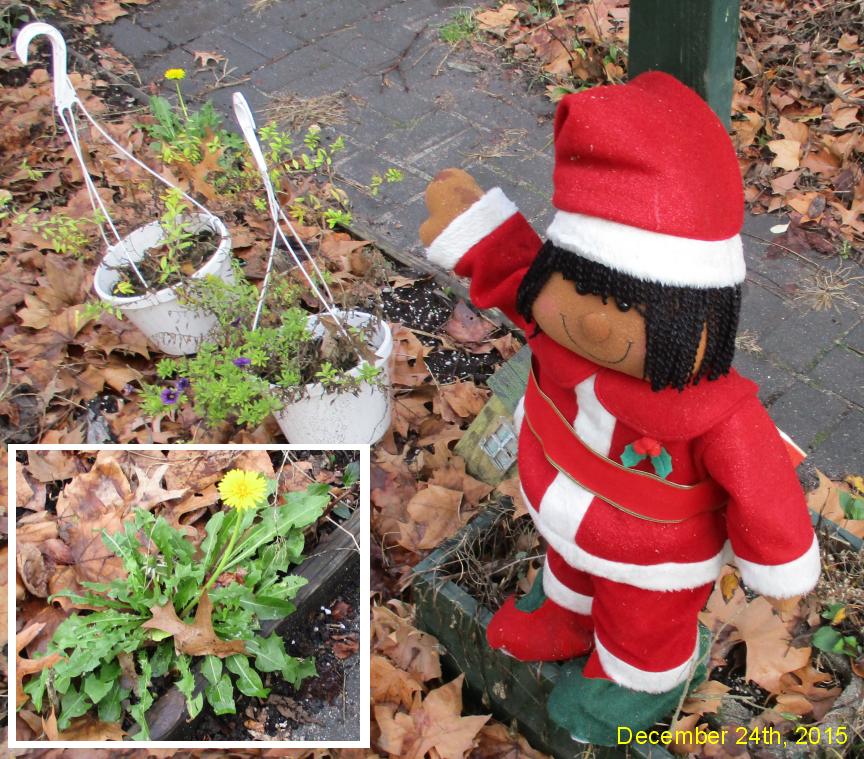
We broke open the bottle of
dandelion wine on Thanksgiving. It was, and still is delicious!
But I thought we'd have to wait until next Spring for the
dandelions to return so we could make a new batch of wine for
2016. Surprise! Because of the warm December weather we are
having, some of my garden flowers are refusing to die, and in the
front yard, next to the Christmas decorations, a dandelion has
decided to flower (it's in the background, but you can see it in
the foreground within the inset). So Merry Christmas to one and
all, God Bless us, every one!
12/25/15 Christmas Day
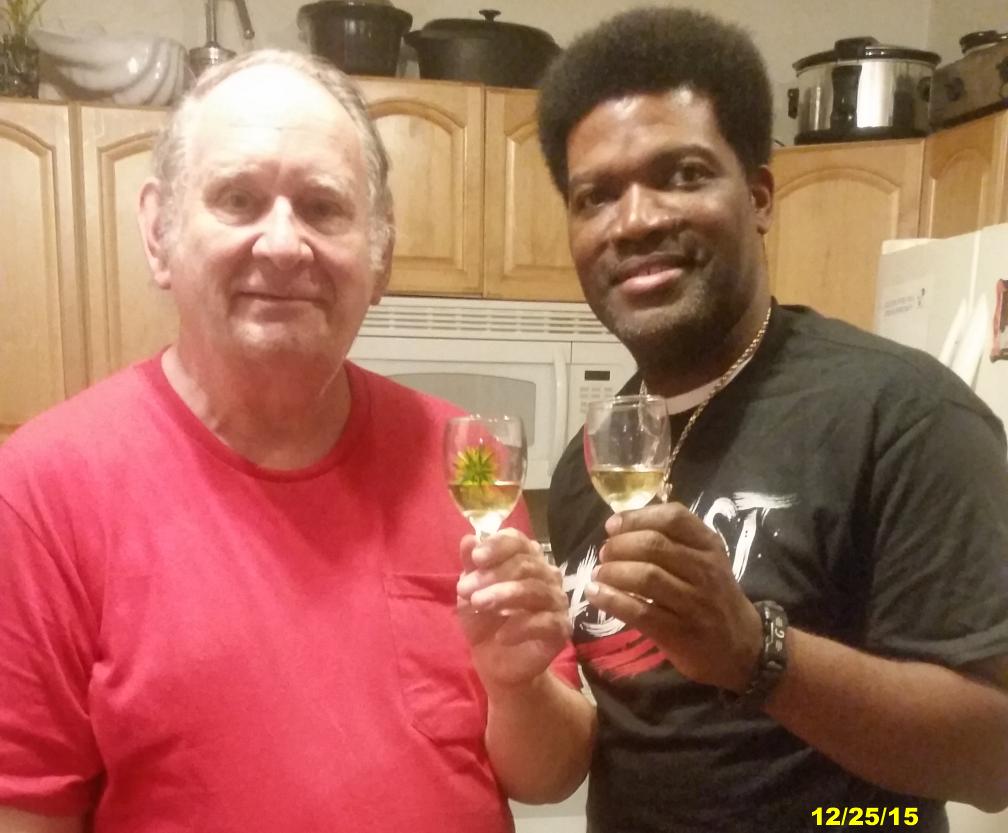
There was enough dandelion wine
for all the adults at our home Christmas Party to just taste it,
or have a glass if they liked it (most did!). I had been singing
Christmas carols at the party and my voice was hoarse and
scratchy, but the dandelion wine was soothing and I was able to
sing a few more carols afterwards, so it definitely has some
medicinal value to a singer. I painted a dandelion on my glass
using stain glass paints, just in case you wondered what that big
green and yellow thing is doing in my drink!
















